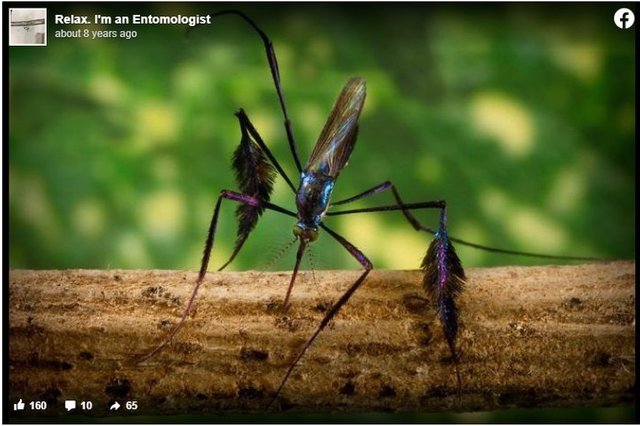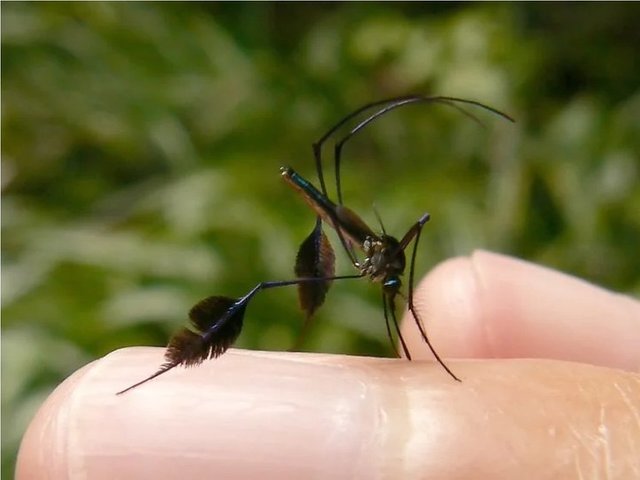
I can think of a few adjectives to describe mosquitoes, but ‘beautiful’ is definitely not one of them. However, there is one notable exception – Sabethes cyaneus, a tropical breed of mosquito that can certainly be called eye-catching.
Found in the tropical forests of central and South America, the Sabethes mosquito is an elusive breed famous for its iridescent blue color and feather-like paddles formed by elongated scales, located on the tibia of each middle leg. The two hind legs arching over the body of the mosquito as it is feeding are also impressive and help build the Sabethes’ majestic appearance. Marveling at its beauty is a privilege, as this breed is well-known for being extremely skittish and difficult to photograph well.
“The mosquito responds to the tiniest of movements and to changes in light intensity,” wildlife photographer Gil Wizen recently told BBC. “This means you must stay very still while attempting to photograph it, and also be prepared for the mosquito’s escape if using a flash. Fortunately, you are never alone with a single mosquito, because usually there are dozens of them hovering over your head.”
The padded middle legs of the Sabethes mosquito are one of its distinct features, but scientists have yet to figure out its purpose. For a while, it was believed that they play a role in the mosquitoes’ famously elaborate mating ritual, but experiments have shown that when the paddles were removed from the male legs, they continued to mate successfully. For now, all we know is that they look good.
Like in the more than 3,300 known species of mosquito in the world, only the females blood-feed, only they only do it when they are about to produce eggs. The rest of the time, they feed on nectar. Whenever they feed, the hind legs arch forward, not as a pose, but because the legs are sensory, they detect movement and allow the insect to flee in case of danger.
Despite its undeniable beauty, it’s worth remembering that the Sabethes is still a mosquito, therefore a vector of tropical diseases like yellow fever and dengue fever.
